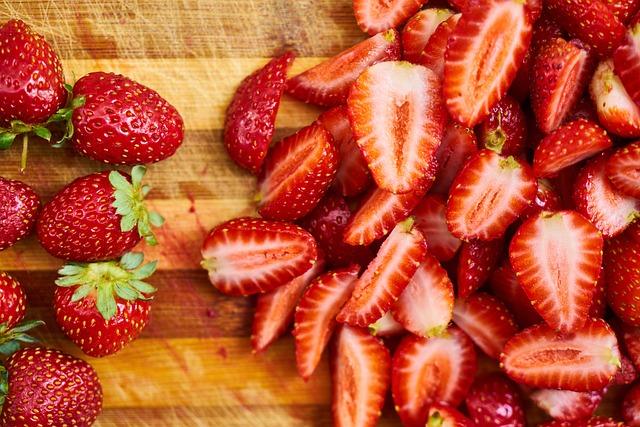Welcoming a dog into your home means embracing the joys and responsibilities of pet ownership, and one of the fundamental aspects of this journey is ensuring your furry companion maintains a healthy appetite. Just like humans, dogs can experience fluctuations in their desire to eat, and these changes can sometimes be concerning. If you’ve noticed that your dog’s enthusiasm for mealtime has waned, you’re not alone. This article is designed to guide you through natural, nurturing strategies to reignite your dog’s appetite. By exploring a range of gentle, holistic approaches, you can support your pet’s nutritional needs and overall well-being, all while strengthening the loving bond you share. Let’s embark on this journey together, ensuring that every mealtime is a moment of joy and nourishment for your beloved dog.
Understanding Your Dogs Dietary Needs
Every dog is unique, and their dietary needs can vary based on their age, breed, size, and health status. To naturally enhance your dog’s appetite, start by examining the quality of their food. Ensure that it contains high-quality proteins, essential vitamins, and minerals. Avoid fillers and artificial additives, which can sometimes lead to a lack of interest in their meals. Consider incorporating some fresh ingredients into their diet, such as cooked chicken, carrots, or sweet potatoes, which can make their meals more enticing and nutritious.
- Routine: Maintain a consistent feeding schedule to help regulate your dog’s appetite. Dogs thrive on routine, and feeding them at the same time each day can stimulate their hunger.
- Exercise: Regular physical activity can naturally boost your dog’s appetite. A good walk or play session can help them feel hungrier and more eager to eat.
- Hydration: Ensure your dog is well-hydrated, as dehydration can suppress appetite. Fresh, clean water should always be available.
- Environment: Create a calm and quiet eating area for your dog. Stress or distractions during mealtime can affect their willingness to eat.
By paying attention to these factors and making small adjustments, you can help encourage a healthier and more enthusiastic eating habit for your furry friend.

Incorporating Fresh and Nutritious Ingredients
Transforming your dog’s meals by adding fresh and nutritious ingredients can be a game-changer for their appetite. Start by introducing lean proteins such as chicken, turkey, or fish, which not only add flavor but also essential nutrients. Vegetables like carrots, peas, and sweet potatoes can provide a crunchy texture and a boost of vitamins that are often lacking in regular dog food. Remember, variety is key, so mix up the ingredients to keep your dog excited about mealtime.
- Lean Proteins: Chicken, turkey, fish
- Vegetables: Carrots, peas, sweet potatoes
- Fruits: Blueberries, apples, bananas
- Healthy Fats: Olive oil, flaxseed oil
Incorporate small portions of fresh fruits like blueberries, apples, and bananas, which can serve as natural sweeteners and are packed with antioxidants. Adding a teaspoon of healthy fats such as olive oil or flaxseed oil can also enhance flavor while promoting a shiny coat and healthy skin. Be mindful of portion sizes and introduce new ingredients gradually to ensure your dog adapts well to the changes. This approach not only boosts appetite but also contributes to overall health and happiness.
Creating a Consistent Feeding Routine
Establishing a stable feeding schedule can significantly enhance your dog’s appetite and overall well-being. Dogs thrive on routine, and having a predictable meal plan helps them anticipate and look forward to their next meal. Here are some key points to consider when crafting a feeding routine:
- Set Specific Meal Times: Offer meals at the same time each day to align with your dog’s natural hunger cycle.
- Consistent Location: Feed your dog in the same spot, creating a familiar and comfortable environment.
- Portion Control: Measure food to avoid overfeeding or underfeeding, ensuring a balanced diet.
- Monitor Their Behavior: Keep an eye on how your dog reacts to meal times and adjust as needed.
By implementing these strategies, you not only improve your dog’s appetite but also contribute to a healthier lifestyle. Consistency is key, and with time, you’ll notice a happier and more eager eater.
Utilizing Herbal Supplements and Natural Remedies
To naturally boost your dog’s appetite, consider incorporating herbal supplements and natural remedies into their diet. Herbs like dandelion, alfalfa, and ginger are known for their appetite-stimulating properties. Dandelion, rich in vitamins A, C, K, and D, can help cleanse the liver and stimulate appetite. Alfalfa, a powerhouse of nutrients, is excellent for digestion, while ginger is renowned for its anti-nausea effects and can gently coax a reluctant eater into enjoying their meals.
- Dandelion: Mix a small amount of dried dandelion leaves into your dog’s food.
- Alfalfa: Add a pinch of alfalfa powder to enhance flavor and nutritional value.
- Ginger: Grate a small amount of fresh ginger and sprinkle it over their meal.
Additionally, bone broth is a nourishing, hydrating supplement that not only enhances flavor but also provides essential nutrients. Ensure that any herbs or supplements are introduced gradually and always consult with a veterinarian to tailor these natural remedies to your pet’s specific needs.

